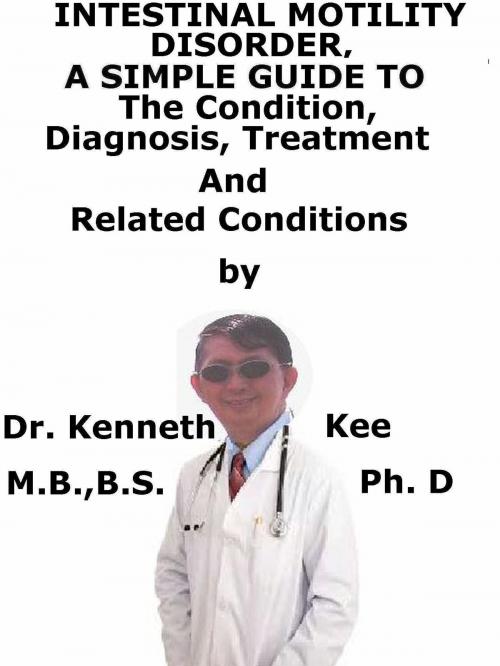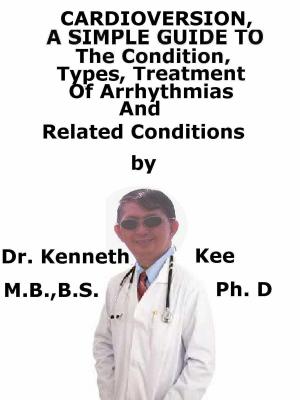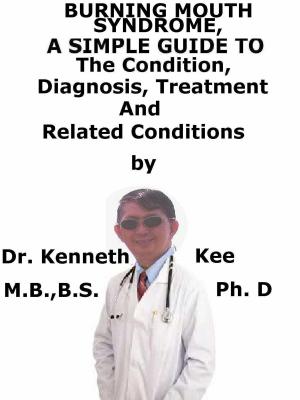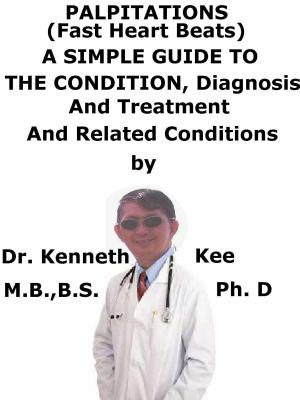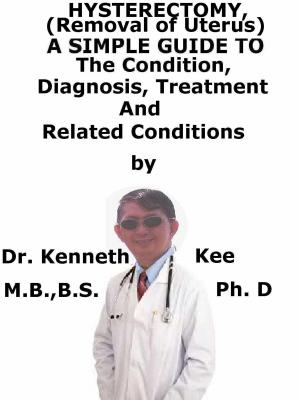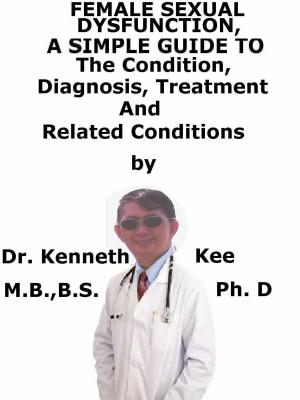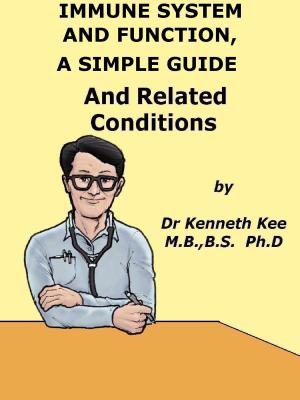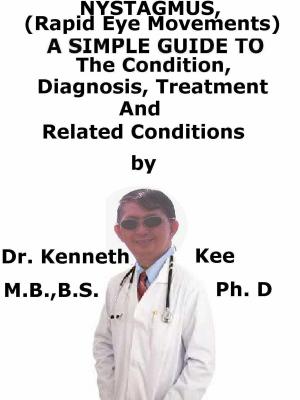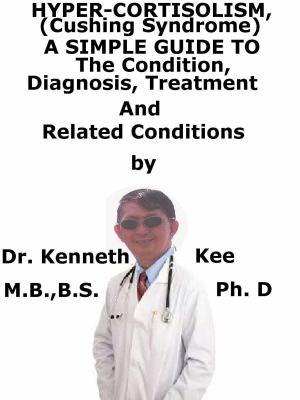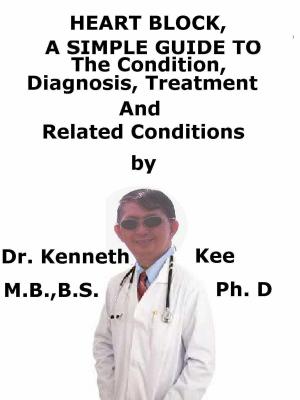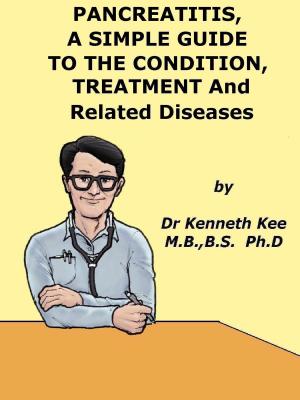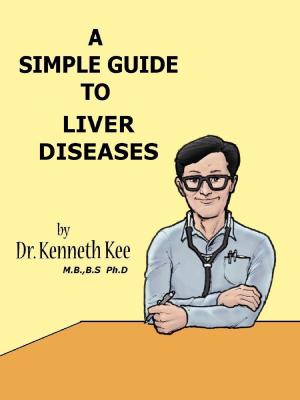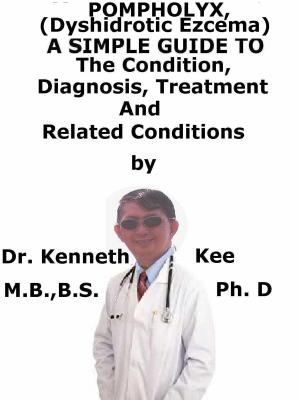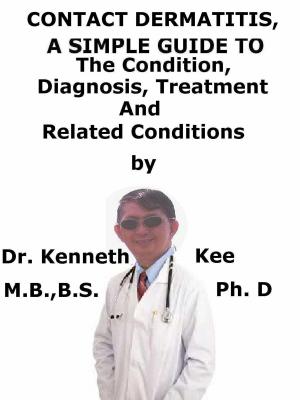Intestinal Motility Disorder, A Simple Guide To The Condition, Diagnosis, Treatment And Related Conditions
Nonfiction, Health & Well Being, Medical, Specialties, Internal Medicine, Gastroenterology, Health, Ailments & Diseases, Abdominal| Author: | Kenneth Kee | ISBN: | 9781370468072 |
| Publisher: | Kenneth Kee | Publication: | February 10, 2017 |
| Imprint: | Smashwords Edition | Language: | English |
| Author: | Kenneth Kee |
| ISBN: | 9781370468072 |
| Publisher: | Kenneth Kee |
| Publication: | February 10, 2017 |
| Imprint: | Smashwords Edition |
| Language: | English |
Intestinal motility disorders are a group of medical intestinal disorders caused by the poorly understood neuromuscular dysfunction of the intestine, which may induce in any region of the gastrointestial tract chronic motor and sensory disturbances typically featured by weakened, spastic or failed movement (motility) of food through the digestive system.
These disorders are real neurological disorders involving the gastrointestinal tract resulting in waxing and waning of digestive symptoms or chronic disabling digestive symptoms for which there is little identification.
The symptoms show a clear pattern:
1. Often escalating 1-2 hours after a meal,
2. Then flaring again at bedtime,
3. Often disrupting sleep.
Symptom severity is also worse upon awaking in the mornings.
Upper-gut motility disturbances:
1. Gastroparesis (“gastro” meaning “stomach” and “paresis’ meaning “weakness”); a serious, chronic, debilitating digestive disease typical featured by serious nausea, vomiting spells, abdominal discomfort or pain, and other upper-gut symptoms.
2. Heartburn involves 10% of Americans on a daily basis and, in 50% of this group, is caused by a motor disorder of the stomach that leads to delayed gastric emptying.
The resulting symptoms of bloating, a feeling of fullness with abdominal discomfort, and nausea cannot be treated by acid-suppressing drugs alone.
3. Swallowing difficulties and food getting stuck up in the throat may indicate the beginning of a more rare and debilitating nerve motor disorder within the esophagus known as achalasia.
Mid-gut motility disturbances:
1. Milder forms of uncoordinated and sluggish movement of food through the mid-gut, with the typical feature of overwhelming abdominal pain, are known by doctors as functional abdominal pain.
2. Bloating, belching, nausea and vomiting may come in episodes, often activated by the simple act of eating.
3. Children may start to form food jags, anorexia, or food avoidance in order to moderate digestive symptoms.
4. Chronic intestinal pseudo-obstruction, a more serious form of mid-gut motility disorder causing severe abdominal pain linked with severe constipation, episodic, nausea, vomiting and profound malnourishment primarily involves young females.
Lower-gut motility disturbances:
1. Chronic constipation induced by motility disturbances of the lower digestive tract, for many start in childhood and continuss into adulthood.
Constipation of this nature may be so disabling to the sufferer as to greatly limit social functions and activities.
2. Irritable bowel syndrome (IBS) is the best identified motility disorder involving 20% of the North American population.
Treatment
Distention and stretching
A couple of glasses of warm water often assist to produce contractions in the rectum due to stretching or bloating of the stomach wall. (gastrocolic reflex)
Abdominal Massage
A few minutes of gentle circular massage of the abdomen activates colonic movement and helps reflexive actions in the colon.
Exercise
The smooth muscle is exercised to maintain tone
A ten minute walk will activate the muscles of the colon and trigger intestinal motility.
Fiber
Insoluble fiber assists retention of water in the colon and bulking of stool
TABLE OF CONTENT
Introduction
Chapter 1 Intestinal Motility Disorder
Chapter 2 Causes
Chapter 3 Symptoms
Chapter 4 Diagnosis
Chapter 5 Treatment
Chapter 6 Prognosis
Chapter 7 Gastroparesis
Chapter 8 Irritable Bowel Syndrome
Epilogue
Intestinal motility disorders are a group of medical intestinal disorders caused by the poorly understood neuromuscular dysfunction of the intestine, which may induce in any region of the gastrointestial tract chronic motor and sensory disturbances typically featured by weakened, spastic or failed movement (motility) of food through the digestive system.
These disorders are real neurological disorders involving the gastrointestinal tract resulting in waxing and waning of digestive symptoms or chronic disabling digestive symptoms for which there is little identification.
The symptoms show a clear pattern:
1. Often escalating 1-2 hours after a meal,
2. Then flaring again at bedtime,
3. Often disrupting sleep.
Symptom severity is also worse upon awaking in the mornings.
Upper-gut motility disturbances:
1. Gastroparesis (“gastro” meaning “stomach” and “paresis’ meaning “weakness”); a serious, chronic, debilitating digestive disease typical featured by serious nausea, vomiting spells, abdominal discomfort or pain, and other upper-gut symptoms.
2. Heartburn involves 10% of Americans on a daily basis and, in 50% of this group, is caused by a motor disorder of the stomach that leads to delayed gastric emptying.
The resulting symptoms of bloating, a feeling of fullness with abdominal discomfort, and nausea cannot be treated by acid-suppressing drugs alone.
3. Swallowing difficulties and food getting stuck up in the throat may indicate the beginning of a more rare and debilitating nerve motor disorder within the esophagus known as achalasia.
Mid-gut motility disturbances:
1. Milder forms of uncoordinated and sluggish movement of food through the mid-gut, with the typical feature of overwhelming abdominal pain, are known by doctors as functional abdominal pain.
2. Bloating, belching, nausea and vomiting may come in episodes, often activated by the simple act of eating.
3. Children may start to form food jags, anorexia, or food avoidance in order to moderate digestive symptoms.
4. Chronic intestinal pseudo-obstruction, a more serious form of mid-gut motility disorder causing severe abdominal pain linked with severe constipation, episodic, nausea, vomiting and profound malnourishment primarily involves young females.
Lower-gut motility disturbances:
1. Chronic constipation induced by motility disturbances of the lower digestive tract, for many start in childhood and continuss into adulthood.
Constipation of this nature may be so disabling to the sufferer as to greatly limit social functions and activities.
2. Irritable bowel syndrome (IBS) is the best identified motility disorder involving 20% of the North American population.
Treatment
Distention and stretching
A couple of glasses of warm water often assist to produce contractions in the rectum due to stretching or bloating of the stomach wall. (gastrocolic reflex)
Abdominal Massage
A few minutes of gentle circular massage of the abdomen activates colonic movement and helps reflexive actions in the colon.
Exercise
The smooth muscle is exercised to maintain tone
A ten minute walk will activate the muscles of the colon and trigger intestinal motility.
Fiber
Insoluble fiber assists retention of water in the colon and bulking of stool
TABLE OF CONTENT
Introduction
Chapter 1 Intestinal Motility Disorder
Chapter 2 Causes
Chapter 3 Symptoms
Chapter 4 Diagnosis
Chapter 5 Treatment
Chapter 6 Prognosis
Chapter 7 Gastroparesis
Chapter 8 Irritable Bowel Syndrome
Epilogue
